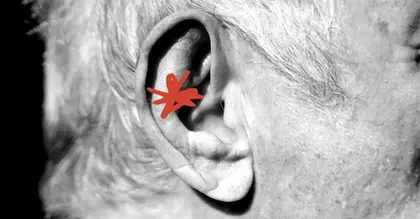
- Past studies have linked physical activity with a decreased risk for many health issues, including Alzheimer’s disease and other types of dementia.
- A new study found that increased physical activity levels during middle age are associated with reduced amounts of the Alzheimer’s disease biomarker beta-amyloid in the brain.
- Researchers also discovered that being inactive during this time was linked to atrophy in brain regions associated with Alzheimer’s disease.
It is well known that exercising regularly is an important part of a
More and more studies correlate physical activity with a decreased risk for many health issues, including type 2 diabetes, heart disease,
Now, a new study recently published in
Researchers have found that increasing physical activity levels during middle age — ages 45 to 65 — is associated with lower concentrations of the protein
For this study, researchers analyzed health data from 337 participants of the ALFA+ longitudinal cohort, which is part of the ALFA (ALzheimer’s and FAmilies) study conducted at the Barcelonaβeta Brain Research Center (BBRC) in Spain. Participants were between the ages of 45 and 65 when they joined the ALFA cohort.
“Midlife is a critical period during which Alzheimer’s disease pathologies begin to accumulate in the brain,” Eider Arenaza-Urquijo, PhD, assistant researcher professor at the Barcelona Institute for Global Health (ISGlobal) and senior author and principal investigator of this study, told Medical News Today. “Over the last decade, research has shown that Alzheimer’s-related changes can occur silently for up to two decades before any clinical symptoms appear. This represents a crucial window of opportunity for prevention and early intervention.”
“Moreover, many modifiable risk factors begin to exert their influence during this stage of life,” Arenaza-Urquijo continued.
“In fact, the most recent
Study participants were asked to record their physical activity via questionnaires at baseline and at their follow-up visit around four years later. The researchers also analysed data from brain scans acquired after the follow-up visit to look for correlations between participants’ exercise levels and Alzheimer’s-related pathologies in their brains.
Study participants were classified into five different groups based on their adherence to the World Health Organization’s (WHO)
- Group 1 remained sedentary
- Group 2 exercised, but not enough to adhere to the WHO guidelines
- Group 3 reached and maintained the WHO guidelines
- Group 4 started at the WHO guidelines, but then became non-adherent
- Group 5 started non-adherent and then hit the WHO guidelines
Upon analysis, researchers found that participants who increased their physical activity to meet WHO-recommended levels had lower amounts of the protein
“Pathological accumulation of beta-amyloid is considered one of the earliest events in the development of Alzheimer’s disease, triggering a cascade of neurodegenerative processes that ultimately lead to cognitive decline and dementia,” Arenaza-Urquijo said.
“Our findings suggest that adopting a more active lifestyle in midlife — especially for individuals who were previously inactive — may play a protective role by slowing or potentially preventing the buildup of this hallmark Alzheimer’s pathology.”
— Eider Arenaza-Urquijo, PhD
Arenaza-Urquijo and her team also discovered that non-sedentary participants showed a greater cortical thickness in brain regions associated with Alzheimer’s disease.
“
Cortical thinning is a marker of atrophy and neurodegeneration. The results suggest that participants who reported no physical activity over the four-year follow-up period exhibited greater loss of cortical thickness. Alternatively, it’s possible that existing neurodegeneration may have hindered these participants’ ability to engage in physical activity.”
— Eider Arenaza-Urquijo, PhD
“We are currently examining the built environment in Barcelona, Spain, and several U.S. cities to explore whether more walkable neighborhoods encourage physical activity among older adults, including those with cognitive decline and dementia,” Arenaza-Urquijo replied when asked what was next for her team’s research.
“Our goal is to understand whether urban design can support active lifestyles and, in turn, promote better brain and cognitive health in later life — integrating the urban environment as a key factor in public health and dementia prevention strategies,” she said.
MNT also had the opportunity to speak with Daniel H. Daneshvar, MD, PhD, chief of the Division of Brain Injury Rehabilitation, and vice president of medical staff for Spaulding Rehabilitation at Mass General Brigham in Massachusetts, about this study.
“We have strong existing evidence that physical activity supports cardiovascular, metabolic, and brain health, and this study strengthens the link between increased physical activity during middle age and reduced Alzheimer’s disease risk,” Daneshvar commented.
“What’s especially important to recognize is that Health interventions like exercise may not only reduce underlying pathology, but also can significantly delay or even prevent the clinical symptoms from ever emerging. This study supports the need to embed exercise and brain-Healthy behaviors as a central part of preventive care strategies starting in middle age.”
— Daniel H. Daneshvar, MD, PhD
For readers who wish to increase their exercise during middle age to potentially lower their Alzheimer’s disease risk, MNT asked Daneshvar for his top tips on figuring out which types of exercise would be best — are specific types of activities more helpful than others?
“The best type of exercise is the one that you’ll actually do — consistently,” he responded. “Both aerobic exercise (like brisk walking, cycling, or swimming), and resistance training (like lifting weights or using resistance bands), have shown benefits for brain health.”
“Ideally, a combination of the two is best because aerobic exercise supports cardiovascular Health while strength training helps preserve muscle mass and metabolic function, which also impact brain Health,” Daneshvar added. “Even small amounts of regular activity can make a difference, so the goal should be to move more throughout the week, starting with realistic and enjoyable activities that fit into daily life.”





